Digital pathology with artificial intelligence analysis provides insight to the efficacy of anti-fibrotic compounds in human 3D MASH model
- PMID: 38467661
- PMCID: PMC10928082
- DOI: 10.1038/s41598-024-55438-2
Digital pathology with artificial intelligence analysis provides insight to the efficacy of anti-fibrotic compounds in human 3D MASH model
Abstract
Metabolic dysfunction-associated steatohepatitis (MASH) is a severe liver disease characterized by lipid accumulation, inflammation and fibrosis. The development of MASH therapies has been hindered by the lack of human translational models and limitations of analysis techniques for fibrosis. The MASH three-dimensional (3D) InSight™ human liver microtissue (hLiMT) model recapitulates pathophysiological features of the disease. We established an algorithm for automated phenotypic quantification of fibrosis of Sirius Red stained histology sections of MASH hLiMTs model using a digital pathology quantitative single-fiber artificial intelligence (AI) FibroNest™ image analysis platform. The FibroNest™ algorithm for MASH hLiMTs was validated using anti-fibrotic reference compounds with different therapeutic modalities-ALK5i and anti-TGF-β antibody. The phenotypic quantification of fibrosis demonstrated that both reference compounds decreased the deposition of fibrillated collagens in alignment with effects on the secretion of pro-collagen type I/III, tissue inhibitor of metalloproteinase-1 and matrix metalloproteinase-3 and pro-fibrotic gene expression. In contrast, clinical compounds, Firsocostat and Selonsertib, alone and in combination showed strong anti-fibrotic effects on the deposition of collagen fibers, however less pronounced on the secretion of pro-fibrotic biomarkers. In summary, the phenotypic quantification of fibrosis of MASH hLiMTs combined with secretion of pro-fibrotic biomarkers and transcriptomics represents a promising drug discovery tool for assessing anti-fibrotic compounds.
© 2024. The Author(s).
Conflict of interest statement
All the authors at the time of the contribution are employed by InSphero AG and PharmaNest and have no conflict of interest to declare.
Figures

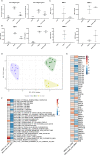
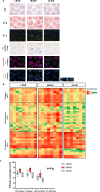
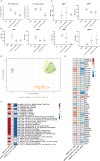
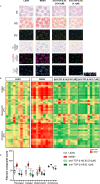
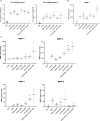
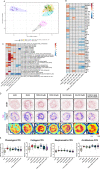
Similar articles
-
Clinical validation of an AI-based pathology tool for scoring of metabolic dysfunction-associated steatohepatitis.Nat Med. 2025 Jan;31(1):315-322. doi: 10.1038/s41591-024-03301-2. Epub 2024 Nov 4. Nat Med. 2025. PMID: 39496972 Free PMC article.
-
AI-based digital pathology provides newer insights into lifestyle intervention-induced fibrosis regression in MASLD: An exploratory study.Liver Int. 2024 Oct;44(10):2572-2582. doi: 10.1111/liv.16025. Epub 2024 Jul 4. Liver Int. 2024. PMID: 38963299
-
Hic-5 antisense oligonucleotide inhibits advanced hepatic fibrosis and steatosis in vivo.JHEP Rep. 2024 Aug 23;6(11):101195. doi: 10.1016/j.jhepr.2024.101195. eCollection 2024 Nov. JHEP Rep. 2024. PMID: 39444410 Free PMC article.
-
Can liquid biopsies for MASH help increase the penetration of metabolic surgery? A narrative review.Metabolism. 2024 Feb;151:155721. doi: 10.1016/j.metabol.2023.155721. Epub 2023 Nov 3. Metabolism. 2024. PMID: 37923007 Review.
-
Liver fibrosis analysis using digital pathology.Med Mol Morphol. 2024 Sep;57(3):161-166. doi: 10.1007/s00795-024-00395-y. Epub 2024 Jul 9. Med Mol Morphol. 2024. PMID: 38980407 Review.
Cited by
-
Kisspeptin Alleviates Human Hepatic Fibrogenesis by Inhibiting TGFβ Signaling in Hepatic Stellate Cells.Cells. 2024 Oct 4;13(19):1651. doi: 10.3390/cells13191651. Cells. 2024. PMID: 39404414 Free PMC article.
-
Digital Pathology Tailored for Assessment of Liver Biopsies.Biomedicines. 2025 Apr 1;13(4):846. doi: 10.3390/biomedicines13040846. Biomedicines. 2025. PMID: 40299404 Free PMC article.
-
Sweet and sticky: increased cell adhesion through click-mediated functionalization of regenerative liver progenitor cells.Commun Biol. 2025 Jul 10;8(1):1023. doi: 10.1038/s42003-025-08408-x. Commun Biol. 2025. PMID: 40640572 Free PMC article.
-
Use of artificial intelligence for liver diseases: A survey from the EASL congress 2024.JHEP Rep. 2024 Sep 6;6(12):101209. doi: 10.1016/j.jhepr.2024.101209. eCollection 2024 Dec. JHEP Rep. 2024. PMID: 39583096 Free PMC article. Review.
References
MeSH terms
Substances
LinkOut - more resources
Full Text Sources

